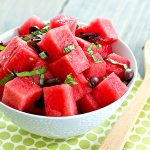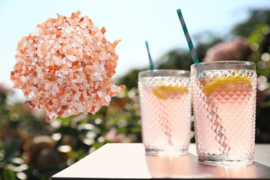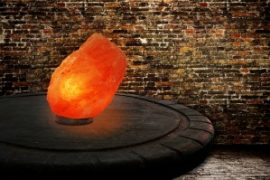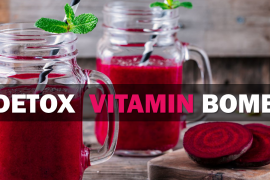Natural Alternative Remedies to the Top 5 Most prescribed Drugs
1. For Pain
Natural Remedy: Try some hands-on help. Pain can be debilitating, sure, but pain meds can be addictive—and ingredients such as acetaminophen may also damage your liver in the long term. Rather than relying on a pill that masks your aches, try to tackle the trigger by seeing a professional with a healing touch.
“Drugs will never be the answer to solving pain because pills treat only the symptoms and not the underlying cause,” says Sungwon D. Yoo, D.C., M.S.A.O.M., L.Ac, a chiropractor and acupuncturist who uses Traditional Chinese Medicine in his private practice, Healing Point, in Fayetteville, NY. “Pain can be caused by an interference in our body’s nervous system, so manipulating the body’s main nervous system channel to the brain—the spine—can help remedy aches.”
Science supports the claims: People with lower back pain who received just four chiropractic treatment sessions in two weeks showed greater improvement in disability and pain compared to those receiving usual care, according to the Archives of Physical Medicine and Rehabilitation.
Web Md advice:
Capsaicin. Capsaicin comes from chili peppers and may soothe pain when applied to the skin. “Topical capsaicin seems to be helpful for all sorts of pain,” says Edwards. Studies have found it can help relieve pain from rheumatoid arthritis, osteoarthritis,psoriasis, shingles, and diabetic neuropathy. It may also offer natural pain relief for back pain, fibromyalgia pain, and headaches. Beware: Your pain may worsen for a few days before it improves when you use capsaicin. And there’s a risk of skin irritation. Wash your hands very well after applying capsaicin. Don’t touch your eyes or other sensitive areas when you have traces of capsaicin on your hands
Vitamin D. A number of studies have linked low levels of vitamin D with increased levels of chronic pain.
One 2009 study looked at the vitamin D levels of people with chronic pain who were using opioid painkillers. Those who had a deficiency of vitamin D needed almost twice as high a dose of medication to control their pain.
Edwards now checks vitamin D levels in many of her patients with chronic pain. If they’re lower than 50 to 70 nanograms/milliliter, she might recommend a supplement for natural pain relief.
“Personally, I’ve seen miracles,” she says. “I’ve found that it can have a huge benefit in the symptoms of people with fibromyalgia.” She reports that it’s helpful with other kinds of chronic pain too, like bone and joint pain.
2. For High Cholesterol
Statins, such as simvastatin (Zocor) or atorvastatin (Lipitor)
Key Statistics: Statins prevent your liver from making cholesterol by blocking a necessary enzyme. Pharmacies dole out more than 45 million prescriptions a year for Lipitor alone.
Natural Remedy: Change Your Diet. Certain foods—such as oats, garlic, olive oil, and red wine—can help reduce inflammation in your body and have been proven to lower “bad” LDL cholesterol (caused in part by high cholesterol foods) or raise “good” HDL cholesterol naturally. The secret to garlic’s heart-protecting powers is an amino acid called allicin, which is released when garlic is crushed. Allicin protects the heart by keeping cholesterol from sticking to artery walls.
And studies show that red wine may raise HDL, or “good” cholesterol, and thin blood to keep artery-blocking clots from forming. In fact, moderate drinking may slash your risk of heart disease by up to 40 percent, according to the Harvard School of Public Health. Here is another tasty heart-smart move: Eating a small square of dark chocolate three to four times a week may be 25 times as effective as taking statins for preventing heart disease, says Dr. Teitelbaum.
3. For High Blood Pressure
Lisinopril (Zestril) or amlodipine besylate (Norvasc)
Key Statistics: The number of blood pressure prescriptions filled every year tops 144 million.
Natural Remedy: Up your intake of these supplements. Prescription meds can be one solution for how to lower blood pressure, but with the help of your doctor and the right supplements, you may be able to cut back—or eventually stop taking—prescription drugs. “In my experience, the best approach is to use medications to bring your blood pressure under control initially, and then add natural therapies that can help you wean off your prescription,” says Dr. Teitelbaum. Increasing your potassium (500 mg a day—present in a banana or a cup of tomato juice or coconut water) and magnesium (200 mg a day) are especially effective at lowering blood pressure in most people.
If you have especially high blood pressure, talk to your doctor about also taking 200 milligrams a day of Coenzyme Q10, an antioxidant that might help lower BP by dilating blood vessels. “Coenzyme Q10 deficiency is especially common in people taking cholesterol-lowering medications, and I have seen it lower blood pressure as much as 30 to 40 points in some severe cases,” says Dr. Teitelbaum. He suggests using the Enzymatic Therapy or Integrative Therapeutics brands for the highest quality and most effectiveness.
4. For Infections
Antiboitics, such as azithromycin (Zithromax) or amoxicillin
Key Statistics: Pharmacies dole out more than 100 million antibiotics a year for respiratory, sinus, and other infections.
Natural Remedy: Go For a nasal rinse. With the ongoing buzz in the news about the dangers of antibiotic-resistant superbugs, it might be wise to first test natural cures to clear certain infections before turning to prescription meds. “Many sinus infections are best treated with saline nasal washes instead of antibiotics,” says Daphne Miller, MD, a physician with a family practice in San Francisco and author of The Jungle Effect: A Doctor Discovers the Healthiest Diets from Around the World.
Dr. Teitelbaum suggests dissolving ¼ teaspoon of salt in a cup of lukewarm purified water. You can also add ¼ tsp. of baking soda to make it more soothing. Inhale some of the solution about one inch up into your nose, one nostril at a time, by sniffing the solution out of the palm of your hand while standing by a sink. Then gently blow your nose, being careful not to hurt your ears. Repeat the same process with the other nostril and continue alternating nostrils until your nose is clear. Do this rinse at least twice a day until the infection improves.
“Each rinsing will simply wash away about 90% of the infection and make it much easier for your body to heal,” says Dr. Teitelbaum. When using any kind of nasal rinse, make sure the water is purified: Using water straight from the faucet can cause serious infections. If you’re using a Neti pot for your rinse, don’t forget to clean it regularly.
5. For Acid Reflux
Omeprazole (Prilosec)
Key Statistics: The number of prescriptions written for Prilosec surged by 8 million in 2010, for a total of 53.4 million prescriptions dispensed.
Natural Remedy: Try herbal relief first. “When people take Prilosec, it blocks the protective hydrochloric acid (HCL) in their stomach, which can lead to bacterial overgrowth in the small intestines and ultimately to mineral deficiencies by hindering their absorption,” says Liz Lipski, PhD, CCN, author of Digestive Wellness. “It’s okay to take Prilosec in the short term, but you should try to find the underlying factors causing your indigestion or reflux rather than just covering them up with drugs.”
Dr. Lipski recommends trying an herbal fix, such as slippery-elm lozenges from your local health food store, to see if it eases symptoms before going on meds. Slippery elm coats the throat and stomach; has antioxidants that help relieve inflammation in your intestines; and boosts mucus production to help protect your gastrointestinal tract from excess acid. “Simple lifestyle changes, such as pinpointing food sensitivities so you can steer clear of your trigger foods, eating slowly, and managing stress will make the biggest difference in the long run,” she says.
Looking for alternatives for diabetes, anxiety, insomnia or depression click here
Source:
prevention.com
Webmd.com




